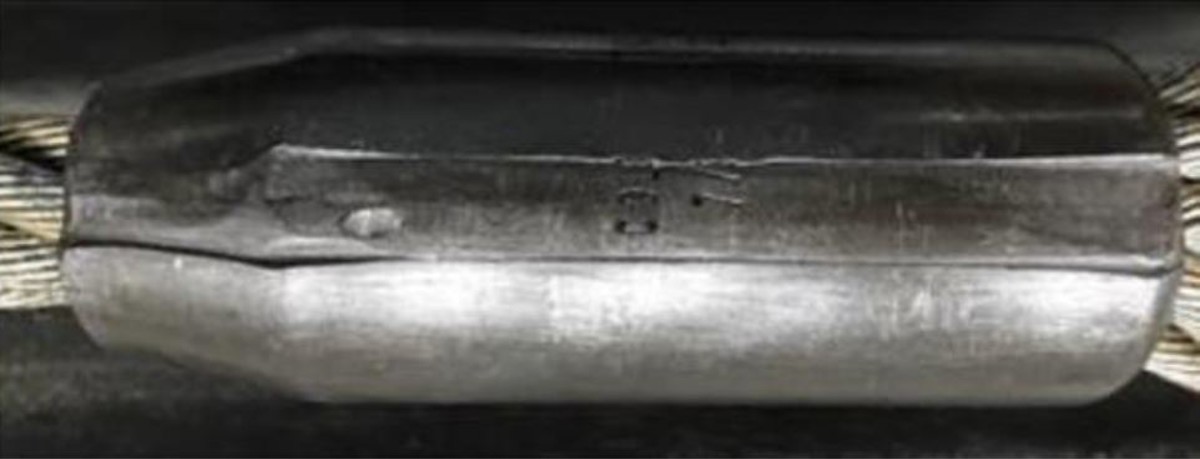High potential dropped object near miss: Steel ferrule failure
- Safety Flash
- Published on 25 October 2017
- Generated on 23 December 2025
- IMCA SF 27/17
- 2 minute read
Jump to:
A winch wire failed causing a pennant assembly and wire to fall directly into a crane basket. There were no injuries.
What happened?
The incident occurred whilst operating a forward utility or ‘tugger’ hoist. Weight was taken by the winch to support a 1.5t basket, to assist the crane in removing the basket from the drill floor.
The winch wire was under tension and the load was 5 cm above the deck, when the winch wire failed sending the pennant assembly and wire directly down into the basket itself and finally coming to rest on the forward winch.
What went wrong? What were the causes?
The 20mm steel wire rope was pulled out of its Flemish eye termination due to a failure of the ferrule.
The Marine Safety Forum (MSF) member reporting the incident considered that the incident had the potential to have been a fatality or to have caused multiple major injuries.
What lessons were learned? What actions were taken?
Steel wire ropes should be checked for the correct crimping of the ferrule.
Care should be taken to ensure that the ferrule shape is correct and the condition is good. In the case of 20mm steel ferrules, the 20mm steel ferrule when pressed should have been round and not hexagonal.
Any 20mm steel wire ropes not meeting that criterion should be removed from service.

correctly pressed 20mm steel ferrule

incorrectly pressed 20mm steel ferrule
Note: Other rope sizes and ropes from other suppliers may have hexagonal ferrules and should be inspected.
IMCA Safety Flashes summarise key safety matters and incidents, allowing lessons to be more easily learnt for the benefit of the entire offshore industry.
The effectiveness of the IMCA Safety Flash system depends on the industry sharing information and so avoiding repeat incidents. Incidents are classified according to IOGP's Life Saving Rules.
All information is anonymised or sanitised, as appropriate, and warnings for graphic content included where possible.
IMCA makes every effort to ensure both the accuracy and reliability of the information shared, but is not be liable for any guidance and/or recommendation and/or statement herein contained.
The information contained in this document does not fulfil or replace any individual's or Member's legal, regulatory or other duties or obligations in respect of their operations. Individuals and Members remain solely responsible for the safe, lawful and proper conduct of their operations.
Share your safety incidents with IMCA online. Sign-up to receive Safety Flashes straight to your email.